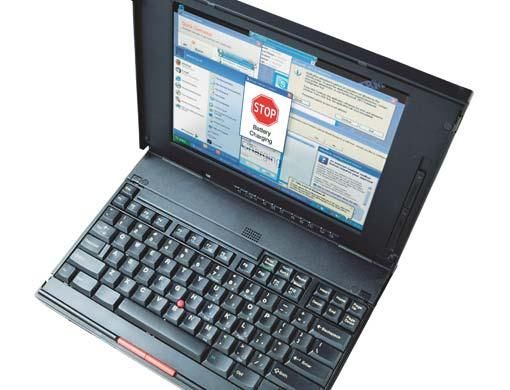Cramming more power into existing batteries clearly isn't the answer to keeping devices working for longer hours.
As people spend more time working away from the office and expect devices to do more and more, their need for power is growing hugely.
Colour screens, cameras, memory cards and 3G, Wi-Fi, Bluetooth and GPS radios eat up power — and mean mobile devices are being used for more hours of the day.
So can battery technology keep pace with the demands being placed on it?
Cramming more power into existing batteries is not the answer: the amount of energy a lithium ion battery can store might have doubled since they were introduced in 1991 but there is only so much they can take.
Overheating batteries
The recent fires caused by overheating batteries illustrates this well. Although the incidents were blamed on contamination during the manufacturing process, higher energy density puts more stress on sensitive components used as safety devices inside the battery.
Companies are having some success modifying the chemistry inside the battery, using nano-particles or adding nickel to the electrode, which Panasonic claims will improve battery life by a third.
But many vendors believe improvements to today's battery technology cannot keep up with tomorrow's features and longer use times, especially for compact devices such as mobile phones.
According to Motorola's director of strategy Andrew Till: “We have four, maybe five years before we need new battery chemistry.. we'll have a real requirement to go to a new chemistry or face very limited features.''
Alternatives
Several companies are working on alternative batteries based on silver and zinc (as in standard disposable batteries), lithium sulphur and lithium polymer .
Hydrogen fuel cells are hard to miniaturise to the point where they would fit inside a phone or laptop, which mean they will be more common as an external power supply: Jadoo already has these on the market but they are too expensive for individual users.
Manufacturers such as Toshiba and Motorola are concentrating on methanol fuel cells that can be topped up with a new cartridge rather than recharged. In time, they will have three to five times the capacity and performance of lithium ion.
Toshiba's Direct Methanol Fuel Cell battery can run an MP3 player for 20 hours from 2cc of methanol; 100cc will keep a PC running for 10 hours. Samsung plans to combine methanol cells with lithium ion batteries to get long life and Duracell will sell the refills.
Fuel cells are unlikely to be used on their own in devices immediately, warns Till: “Over the next 18 months we're unlikely to see major changes in battery chemistry. The new technologies are not ready for a high volume market like mobile phones where we would expect to ship several million units from day one.''
Right size
The methanol fuel cells in Motorola's lab today are twice the size of the equivalent lithium ion battery (and nearly half the size of the phones and PDAs they will power). Till expects them to reach the right size in two years, but realistically it could be up to five years before they reach the market as a standard method of powering portable devices.
New chemistry is not the only way to get better battery life. HP is putting ultracapacitors into some digital cameras to deliver high levels of power for demanding operations such as focusing the lens or writing the picture to memory, using standard alkaline batteries that could not normally offer enough power.
Peak power
The ultracapacitors store energy from the batteries to provide peak power when it is needed, with the low-power battery still providing enough power for less demanding functions. And when they run out, they can be easily and cheaply replaced with another set. In the short term, optimising the way devices use power is key and a very small change can make a very big difference to battery life.
Mike Calligaro from Microsoft's Windows Mobile team lists some power hogs:
“By far, the biggest consumer is the screen's backlight; every minute you spend with the backlight on is 10 minutes less standby time you'll get.
“Running an application that continuously uses the CPU just 1 per cent of the time would cut your standby time from 200 hours to 20. And an LED burns the same amount of power as the entire phone in standby.
“I recently worked on an efficient device and I convinced people to let me change the blink so that than being on 10 per cent of the time, the LED was on 2.5 per cent of the time. On a typical 1,000mAh battery, that change alone would buy almost 50 hours of standby time.''
While users wait for developments, they can charge batteries more often, or carry a second battery. Extended laptop batteries are available for most models of notebook, offering six to eight hours of battery life (less if you use wi-fi and other power-hungry features).
Toshiba is developing a lithium ion battery with higher energy density that can recharge 80 per cent of its power in just one minute, based on nano-particles that can store more energy, more quickly. It will show up in hybrid electric cars and industrial machinery first, but would work just as well in a notebook PC.
Moxia is also bringing out new alkaline AA batteries that work like any others, but one end flips open to reveal a USB plug to allow recharging from a PC to save lugging a mains charger. AAAs and batteries for popular phones and PDAs will follow.
And Vodafone is working with Chargebox and UbiCharge to put charging points into airports, railway stations and shopping centres.
Charging takes place in secure lockers that have a range of connections so no one needs to have a power supply with them.












